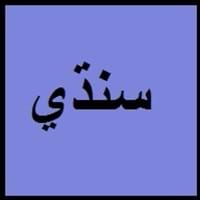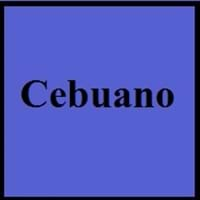Sindhi and Cebuano
Countries
India, Pakistan
Philippines
National Language
India, Pakistan, Sindh
Philippines
Second Language
Not spoken in any of the countries
Philippines
Speaking Continents
Asia
Asia
Minority Language
Not spoken in any of the countries
Not spoken in any of the countries
Regulated By
National Council For Promotion Of Sindhi Language, Sindhi Language Authority
Visayan Academy of Arts and Letters
Interesting Facts
- The first writings of Sindhi language were found in 8th century CE.
- In Sindhi language, every woord ends in a vowel.
- About one-fifth of the population of the philippines speak cebuano and are second largest ethnolinguistic group in the country.
- Cebuano contains many words of Spanish origin.
Similar To
Gujarati
Hiligaynon Language
Derived From
Prakrit Language
Island of Cebu
Alphabets in
Sindhi-Alphabets.jpg#200
Cebuano-Alphabets.jpg#200
Scripts
Arabic, Devanagari
Latin
Writing Direction
Right-To-Left, Horizontal
Not Available
Language Levels
Not Available
Time Taken to Learn
Not Available
Hello
Assalam O Alaikum
Hoy
Thank You
Meharbani
Salamat
How Are You?
Kehra haal aahin
Kumusta man ka?
Good Night
tava kia aayo
Maayong Gabii
Good Evening
Sham Jo Salam
Maayong Gabii
Good Afternoon
Assalam o Alaikum
Maayong Hapon
Good Morning
Subho Bakhair
Maayong Buntag
Sorry
Moon khe afsos aahe
Ikasubo ko
I Love You
Man tokhe prem karyan ti
Gihigugma ko ikaw
Excuse Me
Maaf Kajo
Ekskyus mi
Dialect 1
Siraiki
Boholano
Where They Speak
Upper Sindh
Bohol
Dialect 2
Vicholi
Southern Kana
Where They Speak
Central Sindh
southern Leyte
Dialect 3
Lari
North Kana
Where They Speak
Lower Sindh
northern part of Leyte
How Many People Speak?
Not Available
Second Language Speakers
Not Available
Native Name
Not Available
Visayan
Alternative Names
Not Available
Binisaya, Bisayan, Sebuano, Sugbuanon, Sugbuhanon, Visayan
French Name
sindhi
cebuano
German Name
Sindhi-Sprache
Cebuano
Pronunciation
Not Available
Not Available
Ethnicity
Not Available
Cebuano people
Origin
711 A.D
16th century
Language Family
Indo-European Family
Austronesian Family
Subgroup
Indo-Iranian
Not Available
Branch
Indic
Not Available
Early Forms
Not Available
No early forms
Standard Forms
Sindhi
Standard Cebuano
Signed Forms
Not Available
Not Available
Scope
Individual
Individual
ISO 639 1
sd
No data Available
ISO 639 6
Not Available
Not Available
Glottocode
sind1272
cebu1242
Linguasphere
No data available
No data Available
Language Type
Living
Living
Language Linguistic Typology
Subject-Object-Verb
Verb-Subject-Object
Language Morphological Typology
Not Available
Not Available
All Sindhi and Cebuano Dialects
Most languages have dialects where each dialect differ from other dialect with respect to grammar and vocabulary. Here you will get to know all Sindhi and Cebuano dialects. Various dialects of Sindhi and Cebuano language differ in their pronunciations and words. Dialects of Sindhi are spoken in different Sindhi Speaking Countries whereas Cebuano Dialects are spoken in different Cebuano speaking countries. Also the number of people speaking Sindhi vs Cebuano Dialects varies from few thousands to many millions. Some of the Sindhi dialects include: Siraiki, Vicholi. Cebuano dialects include: Boholano , Southern Kana. Also learn about dialects in South American Languages and North American Languages.
Sindhi and Cebuano Speaking population
Sindhi and Cebuano speaking population is one of the factors based on which Sindhi and Cebuano languages can be compared. The total count of Sindhi and Cebuano Speaking population in percentage is also given. The percentage of people speaking Sindhi language is 0.39 % whereas the percentage of people speaking Cebuano language is 0.32 %. When we compare the speaking population of any two languages we get to know which of two languages is more popular. Find more details about how many people speak Sindhi and Cebuano on Sindhi vs Cebuano where you will get native speakers, speaking population in percentage and native names.
Sindhi and Cebuano Language Codes
Sindhi and Cebuano language codes are used in those applications where using language names are tedious. Sindhi and Cebuano Language Codes include all the international language codes, glottocodes and linguasphere.





